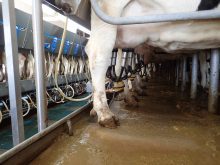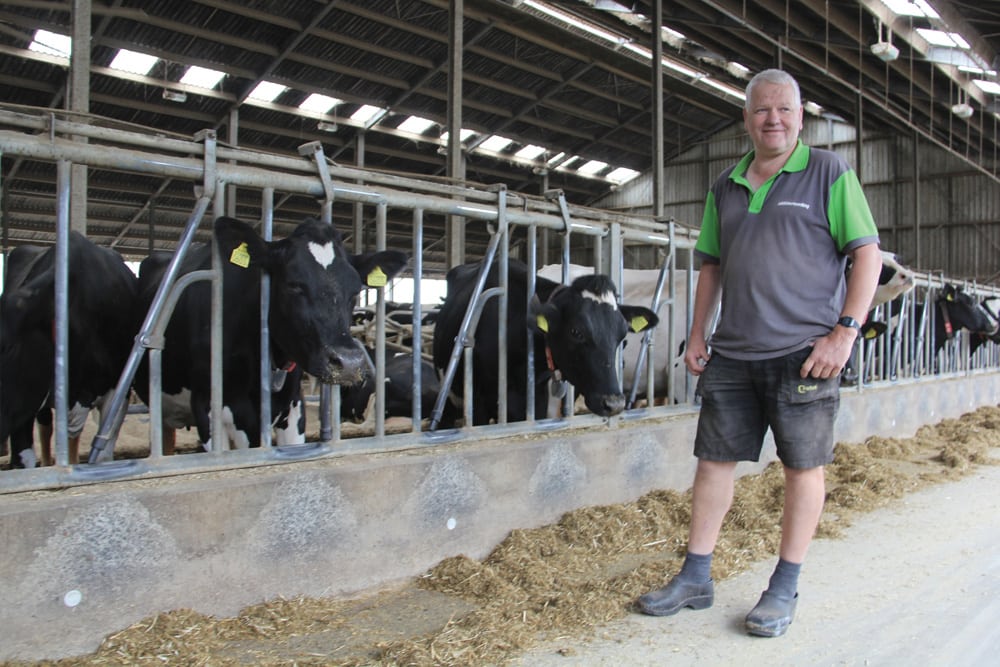“The market will determine the limits on quota prices.”
– DAVID WIENS
The value of milk quota in Manitoba hit an all-time high this month, topping $30,000 per kilogram of butterfat for the first time ever.
A quota exchange conducted June 1 established a clearing price of $31,000/kg, based on 29 successful bids to buy quota and 11 successful bids to sell. In all, 250.06 kg were purchased and 266.59 kg were sold.
(A kilogram of butterfat is roughly equivalent to one dairy cow.)
Read Also

Pig transport stress costs pork sector
Popular livestock trailer designs also increase pig stress during transportation, hitting at meat quality, animal welfare and farm profit, Agriculture and Agri-Food Canada researcher says
Manitoba now joins the other provinces in the P4 western milk pool above the $30,000 quota price benchmark. The most recent value of milk quota is $31,100/ kg in Saskatchewan and $36,800/ kg in Alberta. British Columbia is the highest with an equivalent of $38,325/kg.
While the price of quota soars in Western Canada, the opposite is true in the East.
Quota prices have been capped in the P5 eastern pool, which includes Ontario, Quebec, New Brunswick, Nova Scotia and Prince Edward Island. A price limit of $25,000/kg has been set for quota exchanges under an agreed-to P5 harmonized quota policy in 2009.
Canada’s dairy system is supposed to be a national one. But the difference in attitude between the free-wheeling West and the restrictive East toward quota exchanges couldn’t be more striking.
“The market will determine the limits on quota prices,” said David Wiens, Dairy Farmers of Manitoba chairman, reflecting a let-the-market-decide disposition among P4 provinces.
The reverse is true in the P5, where the industry decided over a year ago that escalating quota values were getting out of hand.
According to an official with Dairy Farmers of Ontario, where the price of quota previously peaked at $33,000/kg, long-term sustainability was a concern. Producers were bidding against each other, driving up prices and taking on too much debt. Increased debt loads and high overhead costs were seen as a threat to the future of the industry.
Ontario tried placing an assessment on quota sales but it wasn’t enough of a factor to lower the price significantly. DFO members themselves finally asked for a cap on quota values, the official said.
But there’s no apparent demand in Manitoba or other P4 provinces for a similar measure, Wiens said.
DFM members at an annual meeting a few years back rejected the idea of controlling the value of quota.
Wiens said he couldn’t speak for the P5 and its quota price cap policy.
But P4 provinces generally take the view that the price of quota rises and falls naturally, depending on supply and demand, he said.
Currently, quota prices are high in Manitoba because of an “exceptional demand” caused by strong milk production, low interest rates and expanding operations. Producers who have used up their quota credits must decide either to sell cows or buy quota. These days, many opt for the latter, said Wiens.
The reverse was true in Manitoba three years ago. Back then, production fell below quota and DFM implemented an extended 15 per cent cover-off because there wasn’t enough milk. The demand for quota was weak and prices fell by over 12 per cent, he said.
Wiens suggested capping quota prices creates “pressure points” which can make transferring quota from one farm to another disruptive. If the price is arbitrarily set, sellers may not come to the market and buyers wanting to purchase quota won’t find it available, he said.
Wiens said no P4 province is considering quota caps right now, although “you never say never.”
But even if quota caps did come in, it needn’t be an across-the-board policy for the entire P4, he added. Each province has its own quota allocation which it administers itself. Quota is not traded between provinces. [email protected]


















